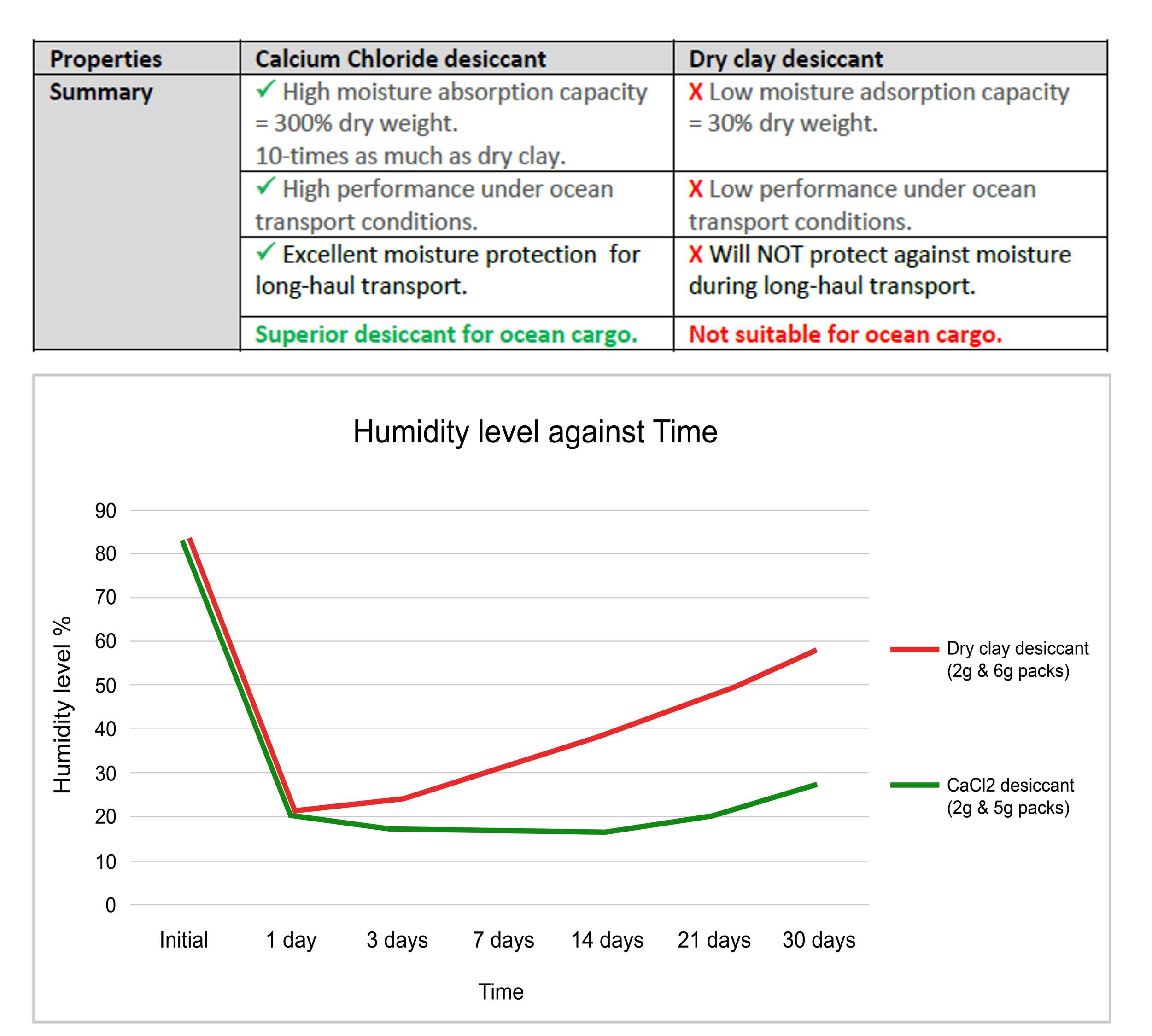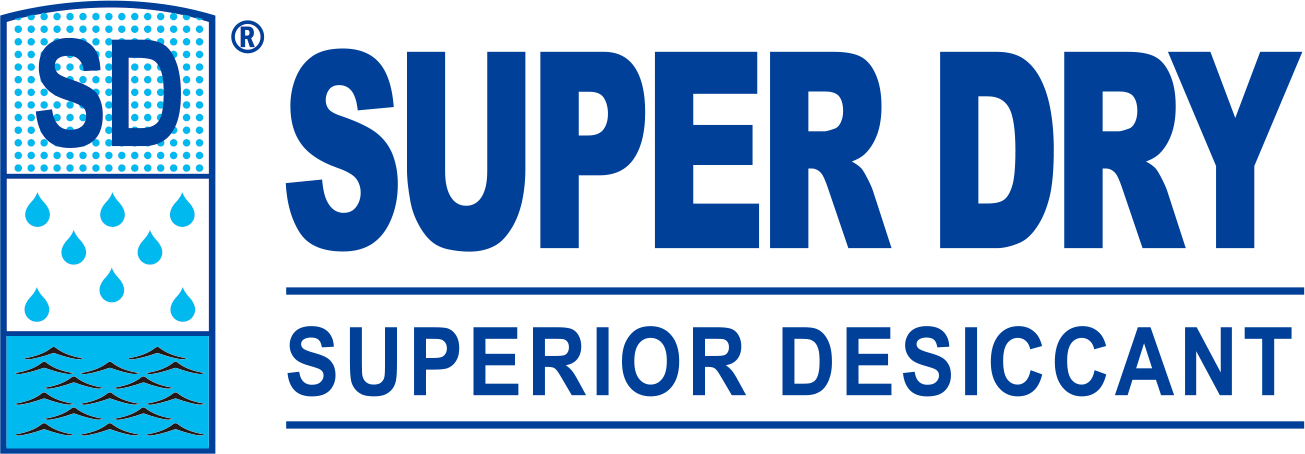
The truth about packaging desiccant
- 23 July 2021
- #Super Dry
Which desiccant is best to protect your cargo from moisture damage during ocean transport?
Dry clay desiccant providers are increasingly promoting their small desiccant products for application inside packaging during ocean container transport. Are these arguments claiming superior moisture adsorption justified? Just follow the facts:
Desiccant performance:
Testing of the effectiveness of dry clay and CaCl2 desiccants to reduce the RH inside closed packaging under normal container transport conditions: 30 days period, >30°C and >50% relative humidity. (Please refer to the Humidity Level Against Time below)
Fact: CaCl2 desiccants lower the humidity inside packaging to safe levels and maintain a low RH environment over an extended period.
Fact: Dry clay desiccants fail to maintain a low RH environment over an extended period, putting the cargo at risk of moisture damage.
Why is this?
Standard packaging materials have limited moisture barrier functions. During extended ocean transport, moisture will permeate through packaging materials, allowing moisture to penetrate packaging, and the cargo.
CaCl2 desiccants provide the safety buffer needed to protect packaged product from moisture under fluctuating conditions for extended periods.
